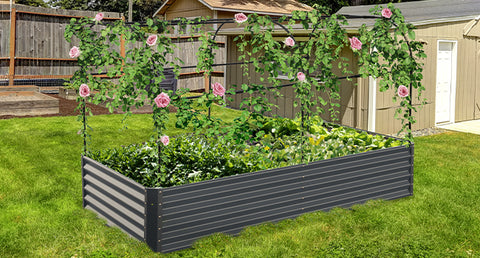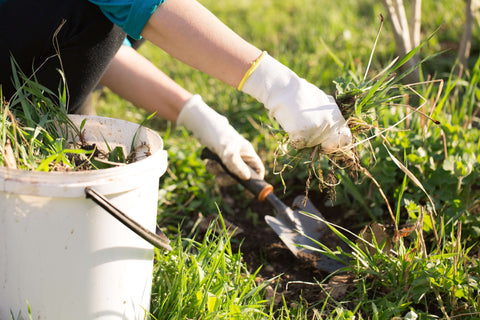A gardening calendar is a calendar designed specifically for gardening. It's a good idea for gardeners to use a calendar made specifically for your plants. The reason for this is that it allows you to keep track of your planting plans.The following content also has some reference value for raised garden beds.
Certain vegetables should be grown in certain seasons. This is because they are the best season to plant them. Therefore, before sowing seeds, you need to research the best planting season for a plant.In addition, different vegetables need different times to germinate and ripen. Some vegetables will be ready for harvest within 40 days, while others may take up to 100 days.
By marking these dates on your calendar, you can get a better idea of when your plants will be ready to harvest. Therefore, you can only pull them out of the ground when they are fully mature.
Whether you use a digital calendar or a physical calendar, this is essential for new gardeners. One benefit of using the digital version is that you can set reminders so you know when to water and harvest your vegetables. You can also include any other gardening work you need to do, such as pruning.
The Vegetable Plan calendar is especially good for beginners, as it can be difficult to remember all those dates. Not to mention, these calendars are a great tool for forgetful gardeners, as they help them stay on top of all the vegetables they grow.
Choose vegetables suitable for beginners
When you start gardening, it is important to consider what kind of plants you wish to grow. Specifically, you should focus on plants that will thrive in your garden. Some vegetables are more difficult to grow than others. For beginners, it's best to avoid growing challenging vegetables.
To get the most out of your garden, it is recommended that you start with these 8 quality vegetables:
Beet
Beets require very little space to grow and are very easy to grow. Another benefit for beginners is that beets don't attract a lot of pests or diseases. You also don't need to prepare much soil, as you can put the beets directly into the soil. Once planted, they usually take 55 to 70 days to mature. Sugar beets are best planted in spring.
Carrot
Carrots are crunchy and bright orange, making them popular with gardeners. They can be easily seeded into the soil by means of a seed drill. Just make sure you choose the best place to grow your carrots, as you'll need plenty of sun and fertile soil.
Once you have planted the carrot seeds, they will begin to sprout within a few weeks. Carrots can be planted from spring until mid-summer, ending around June or August. They may take a few weeks to grow, but they are very easy to harvest. You should harvest carrots when they are nice and long.
Cucumber
Cucumbers are rich in antioxidants and are a nutritious addition to salads and sandwiches. These delicious vegetables are also suitable for beginners as they are quite low maintenance.
Cucumbers grow best in a greenhouse, though they also grow well outdoors in a sheltered area. The reason is that cucumbers need enough heat to germinate. Cucumbers should be planted between April and June. However, if your greenhouse is warm, you can start earlier in the year. After planting, cucumbers usually take 50 to 70 days to grow.
Green bean
Green beans are a great addition to any garden, but they are especially good for beginners. They are also rich in vitamins, namely vitamin A and vitamin K.
They are suitable for planting in spring. In particular, late spring will be a good time to plant green beans, as the frost will have disappeared by then. Green beans are not only suitable for growing outdoors, but also for growing indoors.
Lettuce
Lettuce is a staple in many people's gardens. The reason is that lettuce is extremely versatile, as they can be easily added to burgers, sandwiches, and salads. There are many different types of lettuce, most of which are simple for beginners.
You should plant lettuce seeds in moist soil. You should look for soil that gets a lot of sunlight. Just make sure to give the seeds enough room to grow.
Roach
Radishes have a strong taste that you either love or hate. But if you like the taste of these pink vegetables, they're an excellent choice for beginner gardening. They're a great way to spice up a salad.
Another benefit of radishes is that they can be harvested in a matter of weeks. This is great for impatient beginners.
Spinach
Spinach has a mild, slightly sweet taste and is a super source of vitamin K, folate, calcium, and vitamin c. Spinach is very simple to make, so it's a great addition to a range of dishes.
Pumpkin
The final vegetable for beginners is pumpkin. In particular, butternut squash is a great choice for beginners because it's easy to grow. Around April is the ideal time to plant. It takes about 1 to 2 weeks for pumpkins to sprout.
Pumpkin plants tend to like high temperatures, so be sure to find a suitable piece of soil. It tends to be a relatively hardy vegetable, especially compared to some of the other entries on this list. Make sure your pumpkin gets plenty of water, as it thrives in moist, fertile soil.
Gardening is an excellent hobby for anyone. In particular, vegetable gardening is a rewarding activity that allows you to grow delicious plants that add some nutrition and flavor to your dishes.









